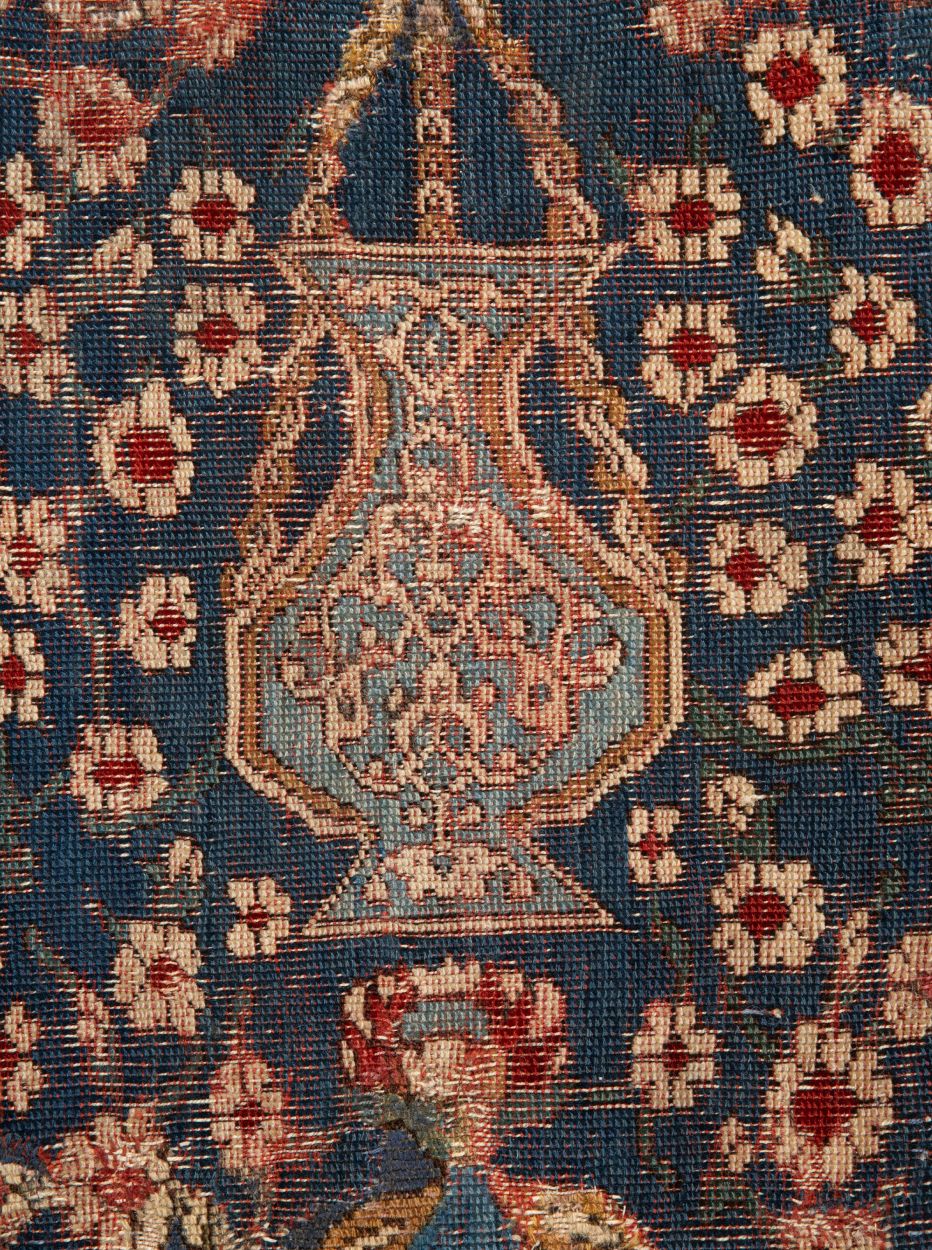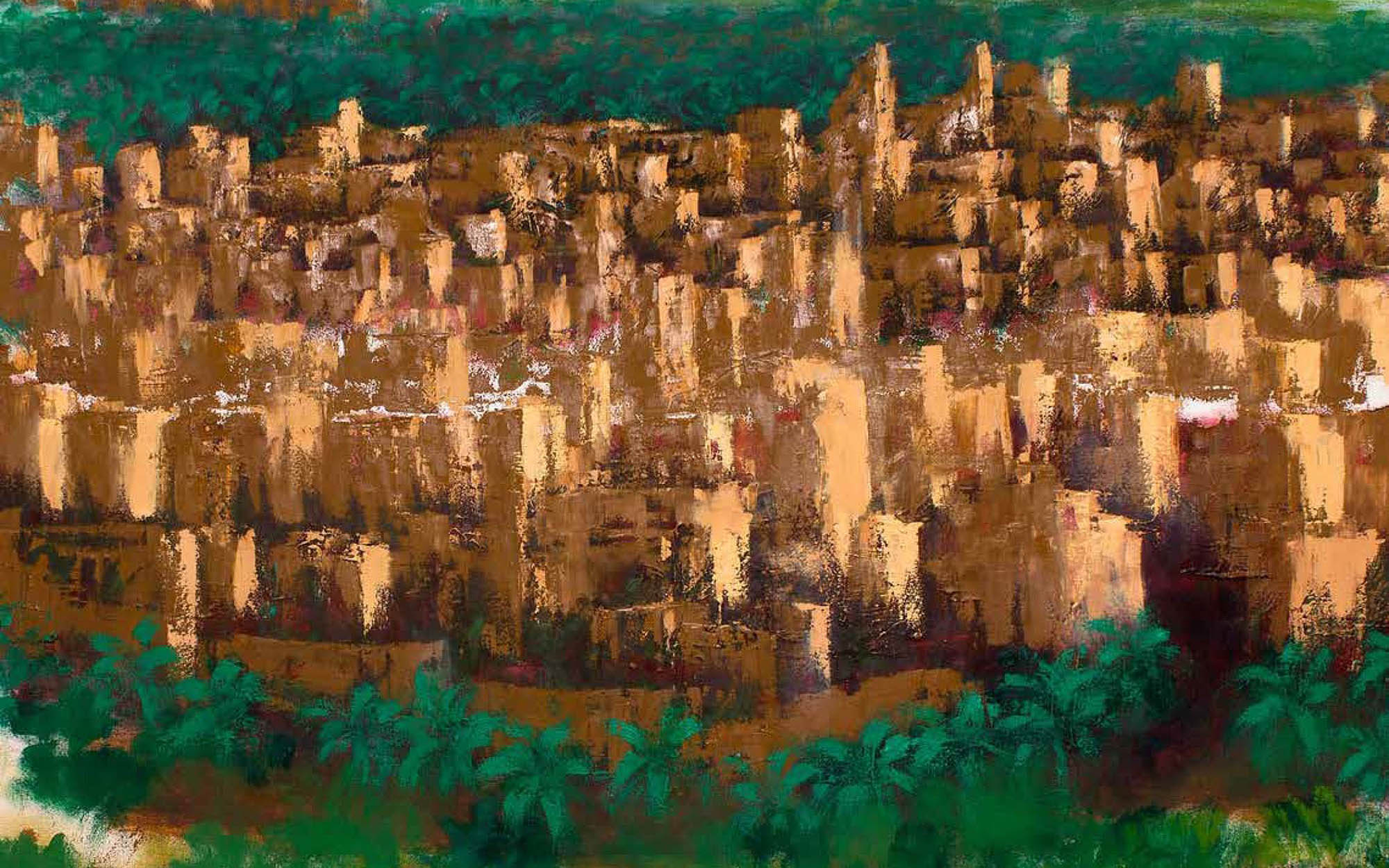Inspirations from a garden
Among Ithra’s collection are two exquisite rare hexagonal tiles from Jerusalem with floral designs.
The Dome of the Rock is one of the world’s most iconic structures, and within it and along its walls, are precious pieces of art, that embody the serenity and beauty of the place. Among Ithra’s collection are two exquisite rare hexagonal tiles from Jerusalem with floral designs.
The tiles are underglaze-painted with black, six-pointed stars surrounding central rosettes on a green ground. They would have formed part of a greater geometric pattern of wall tiles, aligned diagonally with triangular tiles of a different color set in between.
Tiles of this type can be found adorning the walls of the Dome of the Rock, built in the late 7th century under the order of Umayyad Caliph Abd al-Malik ibn Marwan. This Islamic shrine was modified several times over the centuries, and it was during the 16th century when the Ottoman Sultan Suleyman I restored the exterior that tiles such as these (16 centimeters in diameters) were added to the walls.
Both Ithra curiosities items will be part of the exhibition 'Shatr Almasjid: the Art of Orientation' at Ithra from January 2021 to October 2022.
Places of worship and meditation take their inspiration from nature’s greatest artist, the garden. Here, part of Ithra’s collection, is a beautiful carpet fragment — with intricately weaved carnations, tulips, roses, rising cherry blossoms and a lantern— that would have originally formed part of the central upper tier of a communal multiple niche prayer rug, or Saf. It was quite possibly made and designed for the magnificent Selimiye Mosque in Edirne, the center of the Ottoman Empire at the time of construction (1569 and 1575), which was commissioned by Sultan Selim II (1524 -1574) and the masterwork of Mimar Sinan (circa 1490-1588). The Saf is believed to have been removed from the Mosque in 1914. The featured ‘Ushak Row Carpet’ from Ushak, Turkey, dates to c. 1560, and is made of wool pile and measures at 145cm x 74cm. This type of design of the Saf would have reflected the splendor of the Mosque’s interior.


With over 350 plants, and two gardens and three oases of different sizes, colors and species, Ithra is a lush oasis of vegetation in the midst of a barren landscape.
Some of its most common trees include the nation’s pride— the date palm, and the symbolic olive tree, known by the botanical name Olea europaea, meaning ‘European olive,’ found traditionally in the Mediterranean Basin. The sandy grounds are cloaked with sporadic flowers, such as the exquisite
Vinca rosea’, also known as ‘bright eyes’ that are varied in colors from white to dark pink. Other common plants are Opuntia ficus-indica, or the prickly pear, a species of cactus known for its ability to grow in tough dry areas, and the distinct Yucca Gloriosa, recognized for their pointy, sword-shaped leaves.
Together with the desert shrub of Encelia farinosa, also known as brittlebush, the Ithra gardens are a wonderful stroll, filled with a special aroma of sandy sweetness and sturdiness.


